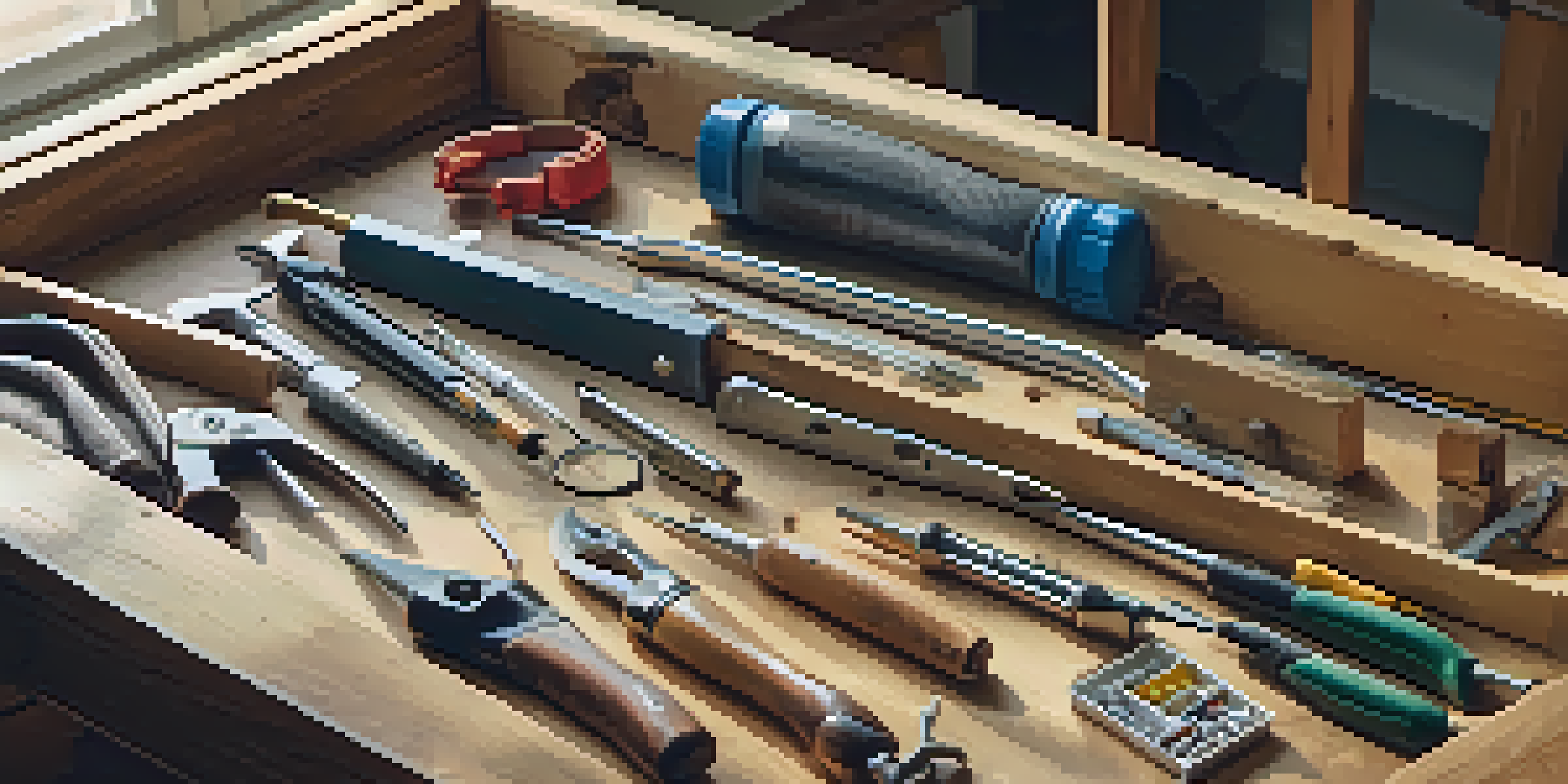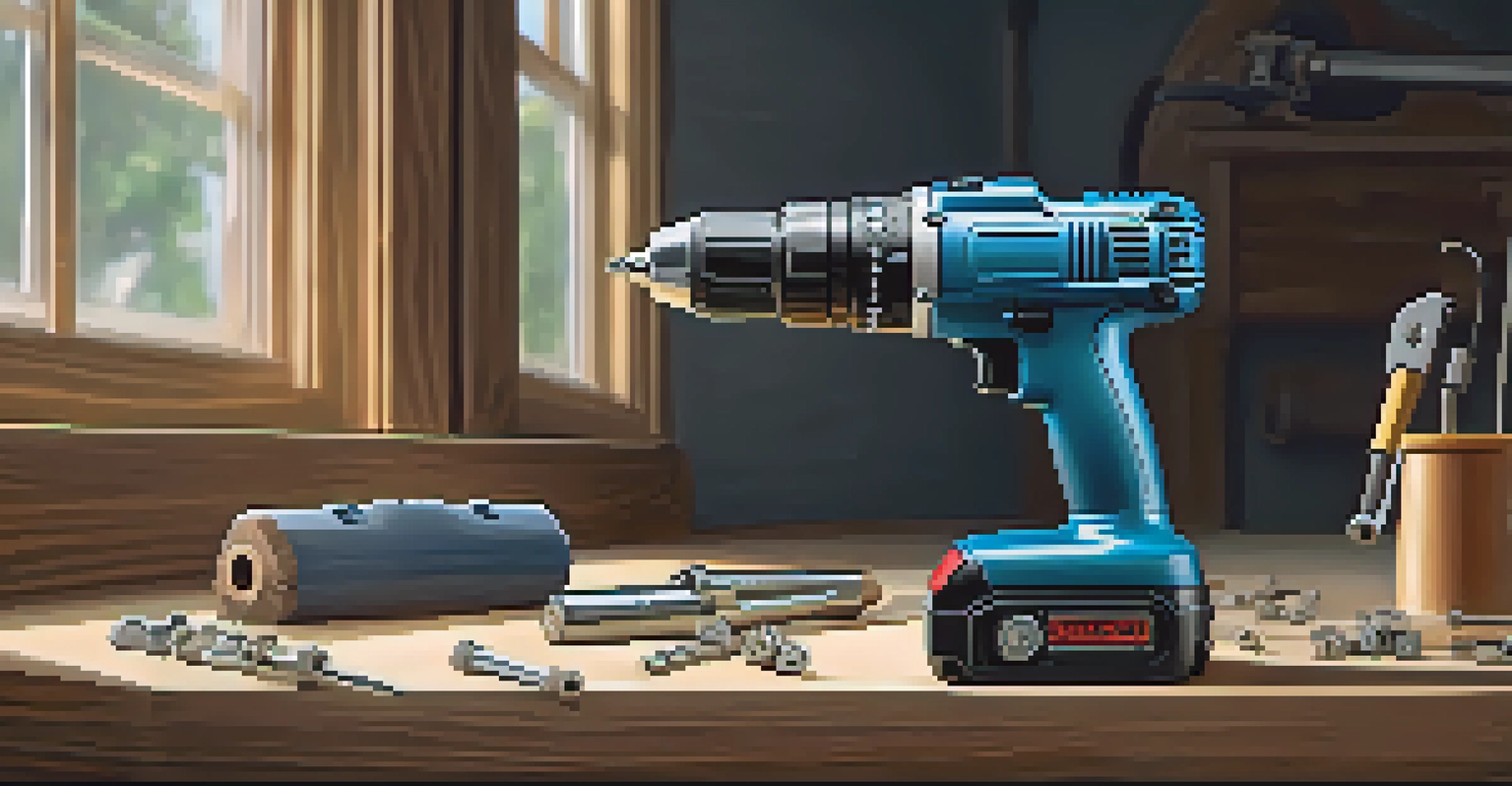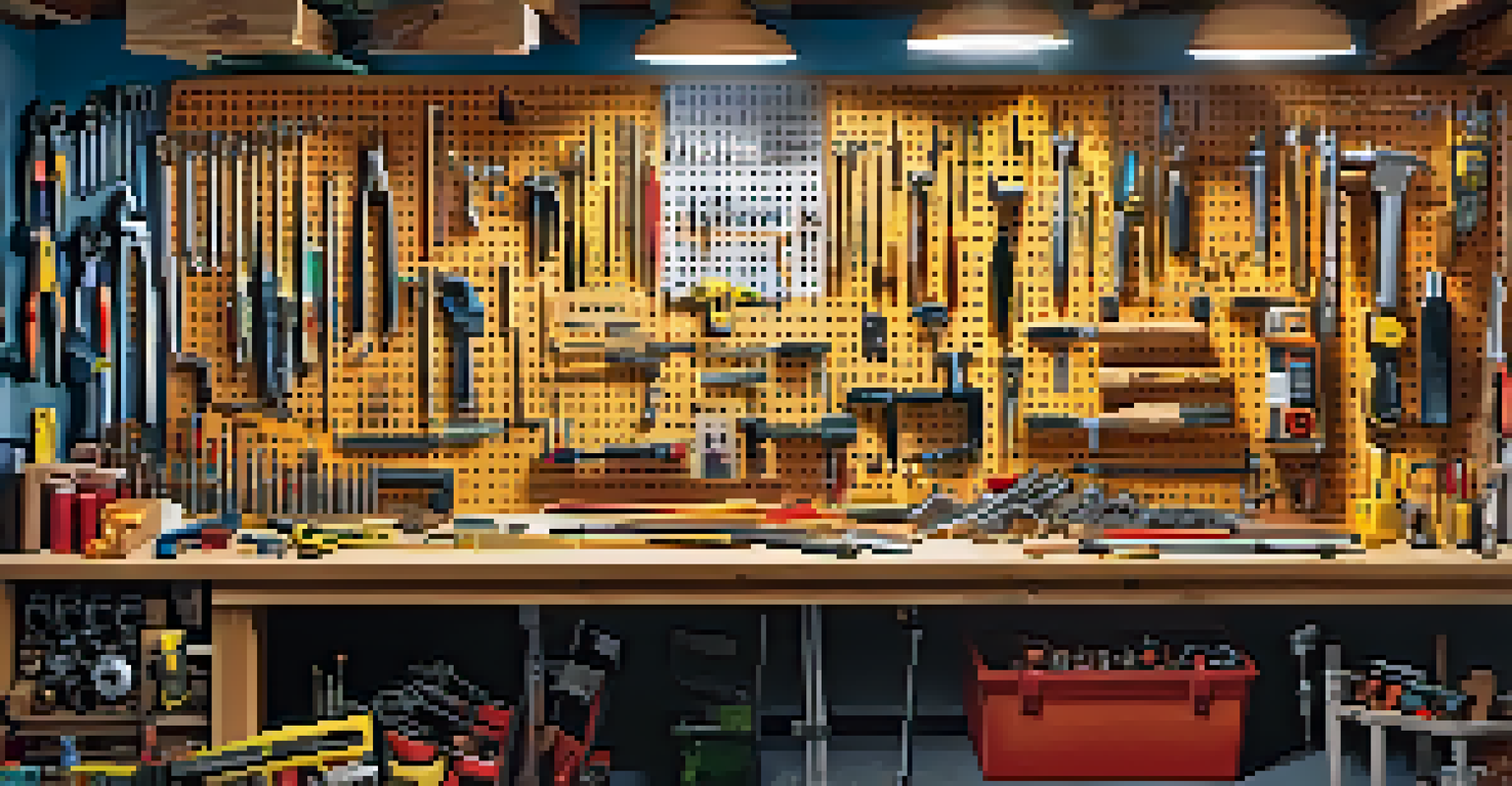The Essential Toolkit for DIY Home Improvements

Why a DIY Toolkit is Essential for Home Improvements
Having a well-equipped toolkit is the backbone of any DIY project. It empowers you to tackle home improvements with confidence and efficiency. Whether you're hanging a picture frame or remodeling an entire room, the right tools make all the difference.
The best way to predict the future is to create it.
Think of your toolkit as a treasure chest; each tool holds the potential to unlock your home’s true beauty. Without the proper tools, even the simplest tasks can turn into frustrating challenges. By investing in a solid toolkit, you save time and possibly avoid costly repairs down the road.
Moreover, a DIY toolkit encourages creativity. It gives you the freedom to explore your ideas and bring them to life, transforming your home into a personal haven. With the right tools at your fingertips, the sky's the limit!
Basic Hand Tools Every DIYer Should Own
Every DIY toolkit should start with a few basic hand tools that are versatile and essential. A hammer, screwdrivers, pliers, and a tape measure are the must-haves for any homeowner. These tools are the bread and butter of DIY projects, capable of handling a wide range of tasks.

Imagine trying to put together a piece of furniture without a screwdriver—it’s a bit like trying to bake a cake without flour! Each of these hand tools serves a specific purpose, making them invaluable for both small fixes and larger projects.
Safety First in DIY Projects
Investing in safety gear ensures you protect yourself from potential hazards while working on DIY tasks.
Investing in quality hand tools can make your projects smoother and more enjoyable. While they may cost a little more upfront, durable tools save you money in the long run as they won't need to be replaced as frequently.
Power Tools for More Complex Projects
Once you’ve mastered the basics, you might want to expand your toolkit with some power tools. A cordless drill, circular saw, and sander can significantly speed up your projects and make complex tasks more manageable. These tools can handle heavy-duty jobs that hand tools might struggle with.
Tools are the backbone of any great project; without them, you might as well be trying to build a house with your bare hands.
Think of power tools as the turbo boost for your DIY capabilities. They allow you to cut, drill, and finish materials with precision and ease, opening up a world of possibilities for home improvement. However, they do require a bit of practice to use safely and effectively.
Always prioritize safety when using power tools. Invest in protective gear like goggles and gloves, and familiarize yourself with each tool's manual. With the right precautions, you can harness the power of these tools to make your home improvements a breeze.
Measuring and Leveling Tools for Accuracy
Accurate measurements are vital in any home improvement project, which is why measuring and leveling tools are essential. A quality tape measure, carpenter's square, and level can help ensure everything from shelves to picture frames is perfectly aligned. After all, nobody wants a crooked shelf!
Imagine trying to build a bookshelf without a level—it's a surefire way to have books sliding off! These tools help you achieve precision, making your projects not only look professional but function well too. They are your secret weapons for achieving that polished finish.
Essential Tools for DIY Success
A well-equipped toolkit, including basic hand tools and power tools, is crucial for tackling home improvement projects effectively.
Investing in digital measuring tools can also add a modern twist to your toolkit. They often come with features that simplify the measuring process, providing quick and accurate readings that traditional tools might miss.
Safety Gear: Protecting Yourself While DIYing
Safety should always be your top priority when embarking on DIY projects. Investing in safety gear like gloves, goggles, and a dust mask protects you from potential hazards. No one wants to end up in the emergency room because they skipped these essentials!
Think of safety gear as the armor of your DIY adventures. Just like a knight wouldn’t go into battle without their shield, you shouldn’t tackle renovations without proper protection. This gear ensures you can focus on your project without worrying about injuries.
Make it a habit to wear your safety gear every time you work on a project. It’s a small investment that can save you from significant setbacks, allowing you to work confidently and efficiently.
Storage Solutions for Your DIY Toolkit
A well-organized toolkit makes all the difference when you're in the middle of a project. Consider investing in toolboxes, pegboards, or bins that allow you to store your tools in a way that’s both accessible and efficient. After all, no one enjoys digging through a cluttered space to find a wrench!
Imagine trying to build a table with tools scattered everywhere—it’s a recipe for frustration. By keeping your tools organized, you save time and reduce stress, making your DIY experience much more enjoyable. Plus, it’s easier to spot when you’re missing a tool.
Organized Toolkit Boosts Efficiency
Keeping your tools organized with proper storage solutions saves time and reduces frustration during projects.
When choosing storage solutions, think about your space and how you work. Vertical storage like pegboards can save space while giving you easy access to your most-used tools. A little organization goes a long way in enhancing your DIY workflow.
Maintenance Tips for Your Tools
Taking care of your tools is just as important as using them. Regular maintenance can extend the life of your tools and keep them functioning at their best. Simple practices like cleaning, sharpening blades, and oiling moving parts can make a significant difference.
Imagine trying to cut wood with a dull saw—it’s not only inefficient but can be unsafe too! By dedicating a few minutes after each project to check and maintain your tools, you ensure they’re ready for your next adventure. Plus, it saves you from the hassle of unexpected repairs.

Creating a maintenance schedule can help you stay on top of your tool care. It’s a small investment of time that pays off, ensuring your toolkit remains a reliable partner in all your DIY endeavors.
Final Thoughts on Building Your DIY Toolkit
Building a comprehensive DIY toolkit is a journey, not a race. Start with the essentials, and as you tackle more projects, you can gradually add more specialized tools. The key is to choose quality over quantity, ensuring your toolkit will serve you well over the years.
Remember, each tool you add is an investment in your creativity and ability to enhance your home. Embrace the learning process and don’t be afraid to experiment with new projects and techniques. You might just discover a hidden talent!
Ultimately, a well-equipped toolkit not only makes home improvements easier but also turns them into enjoyable experiences. So gather your tools, roll up your sleeves, and get ready to transform your space!